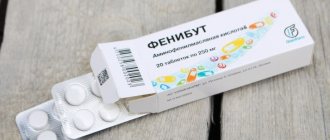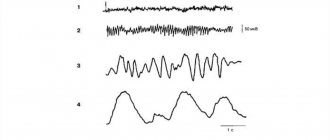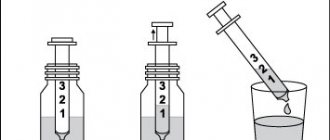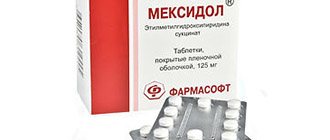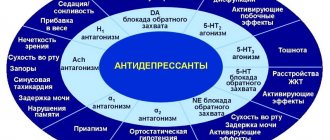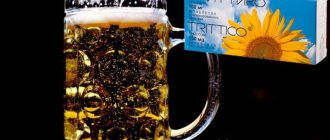Home>Articles>Dangerous consequences of simultaneous use of antidepressants and alcohol
quick menu (hide)
- Functioning of antidepressant drugs
- Alcohol while taking antidepressants
- SSRIs-antidepressants and alcohol
- Tricyclic antidepressants
- MAO inhibitors
- Alcohol with herbal antidepressants
- Antidepressants and alcohol: consequences of joint use
- Antidepressants and alcohol after completing a course of medication
Antidepressants and alcoholic drinks are incompatible things. If there is alcohol in the blood, the risk of side effects of antidepressants increases, which especially concerns the central nervous system. Let's look at why this happens.
What is the basis for the functioning of antidepressant drugs?
Basically, antidepressants are taken with the aim of increasing in the body the degree of production of hormones responsible for a favorable emotional background, normal mood, and an active mood.
After completing a course of taking such drugs, the patient begins to become interested in life, events and the people around him. The thoughts that his life is aimless and meaningless disappear.
The effect of taking such medications can be felt 14 days after starting to take the drugs, not earlier. The shortest duration of treatment is 3-4 months.
If the patient also has an alcohol addiction, then for the sake of his health and mental state he must give up alcohol for the entire duration of the course. Otherwise, dangerous side effects may occur, the effects of which will be enhanced by drinking alcohol.
Literature:
- A short reference book on psychopharmacology, pharmacotherapy and mental pathology / Kozlovsky, Vladimir Leonidovich. - St. Petersburg: SpetsLit, 2015.
- Modern psychotropic drugs used in psychiatry: educational and methodological manual / Olga Fedorovna Pankova, Artem Vyacheslavovich Alekseev, Alexander Viktorovich Abramov; Ministry of Health of the Russian Federation, Federal State Autonomous Educational Institution of Higher Education "Russian National Research Medical University named after N. I. Pirogov" (FGAU HE RNRMU named after N. I. Pirogov of the Ministry of Health of Russia), Department of Psychiatry and Medical Psychology. — Moscow: Federal State Autonomous Educational Institution of Russian National Research Medical University named after. N.I. Pirogova Ministry of Health of Russia, 2021. - 135 p.
- Experimental study of the influence of alcohol on the biological effects of antidepressants / Evgenia Olegovna Kucher, Maya Konstantinovna Shevchuk, Konstantin Vladimirovich Sivak / 2010 / Bulletin of St. Petersburg University. Medicine
SSRI antidepressants and alcohol: consequences
Serotonin is a signaling substance. Brain cells exchange serotonin molecules to transmit information. If a person is depressed, then he has an imbalance of serotonin.
SSRI antidepressants stabilize the patient's mood, easing the course of depression.
SSRI drugs contain the following active ingredients:
- Fluoxetine;
- Sertraline;
- Paroxetine;
- Citalopram;
- Escitalopram;
- Fluvoxamine;
- Venlafaxine;
- Duloxetine.
Alcoholic drinks should not be combined with selective serotonin reuptake inhibitors, as they increase the side effects of taking antidepressant medications. Also, such combinations can cause depressive psychosis, sexual disorders, and the appearance of hallucinations.
Difficult blood clotting, a sudden decrease or increase in blood pressure, and arrhythmia are possible. Secretory functions may deteriorate.
Complex autonomic disorders may appear.
Material and methods
We examined 32 patients, 15 women and 17 men, aged from 18 to 57 years (average age 31.75 years) with endogenous depression, who were undergoing inpatient treatment in the clinical departments of the department for the study of endogenous mental disorders and affective states of the Federal State Budgetary Institution "Research Center for Mental Health" » RAS.
The design of the study was open naturalistic. The average duration of the disease from its first manifestation was 7.9 years, the average number of depressive episodes suffered before inclusion in the study was 3.3. The duration of the current depressive episode before starting Velaxin was on average 4.5 months.
According to nosological affiliation, the patients were distributed as follows: 22 (68.6%) patients were diagnosed with endogenous affective diseases - manic-depressive psychosis (MDP), cyclothymia; in 5 (15.6%) depression developed in the dynamics of low-progressive schizophrenia, and in 5 (15.6%) postpsychotic depression was noted in the context of paroxysmal schizophrenia. According to ICD-10, the depressive state of patients was diagnosed according to the following categories: F31.3—F31.4; F32.0—F32.2; F33.0—F33.2; F21; F20.4. Typologically, depressive states were defined as melancholy (3 patients, 9.4%), anxious (11 cases; 34.4%) and apatho-adynamic (18 patients; 56.2%). Thus, in accordance with the two-level psychopathological model of depression [24], its first 2 types were defined as typical, representing positive affectivity (sad and anxious depression), apatho-adynamic depression as atypical and related to negative affectivity.
According to the total scores on the Hamilton Depression Scale (HAM-D) before treatment: mild depressive disorders were registered in only 2 (6.25%) people, moderate in 13 (40.6%), severe depression in 17 (53.15%), i.e., the vast majority of patients had moderate to severe depression.
The study used venlafaxine, marketed as Velaxin 75 mg tablets (Hungary). The drug was prescribed orally, starting from 37.5-75 mg per day. Subsequently, based on the condition of the patients, over the next few days the daily dose was increased, reaching the maximum for a given patient, but not more than 300 mg. On average, the highest mean dose of Velaxin used was 182.1–198.2 mg per day. The drug was taken twice, morning and evening. According to the study protocol, the course of Velaxin therapy was 56 days (8 weeks).
To assess the severity of depressive symptoms and determine the therapeutic effect, in addition to the clinical observation method, the HAM-D-24 scale, containing 24 signs, was used. The severity of depressive symptoms was assessed before the start of the course of treatment (day 0), then on days 1, 3, 5 of therapy and then at the end of each of the 8 weeks of course treatment. The effectiveness of the antidepressant effect of velaxin was assessed by the degree of reduction in HAM-D scores in % relative to the score before treatment in the following gradations: reduction in scores up to 20% - as “insignificant”, by 21-50% - as “moderate”, by 51- 80% - as “good” and 81-100% - as a “significant” effect (including “practical recovery”). A decrease in the total HAM-D score to 6 or less meant complete “entry” into remission. Maintaining the HAM-D depression severity score at the same level or increasing the total score was regarded as no effect or “worsening” of the condition. To assess the spectrum of antidepressant action of Velaxin, the degree of reduction in the average total score of individual signs identified in the HAM-D was determined, conditionally characterizing melancholic or sad (items 1-3, 22-24), apatho-adynamic (items 7 and and anxious (items 9 and 10) manifestations in the structure of the depressive state.
The severity of depressive symptoms was assessed before the start of the course of treatment (day 0), then on days 1, 3, 5 of therapy and then at the end of each of the 8 weeks of course treatment. The effectiveness of the antidepressant effect of velaxin was assessed by the degree of reduction in HAM-D scores in % relative to the score before treatment in the following gradations: reduction in scores up to 20% - as “insignificant”, by 21-50% - as “moderate”, by 51- 80% - as “good” and 81-100% - as a “significant” effect (including “practical recovery”). A decrease in the total HAM-D score to 6 or less meant complete “entry” into remission. Maintaining the HAM-D depression severity score at the same level or increasing the total score was regarded as no effect or “worsening” of the condition. To assess the spectrum of antidepressant action of Velaxin, the degree of reduction in the average total score of individual signs identified in the HAM-D was determined, conditionally characterizing melancholic or sad (items 1-3, 22-24), apatho-adynamic (items 7 and and anxious (items 9 and 10) manifestations in the structure of the depressive state.
In addition, at the above periods, the severity of the depressive state and the degree of its improvement over time were assessed using the CGI Clinical Global Impression scale and its subscales CGI-S and CGI-I. To record side effects, the UKU interview scale was used, which consists of 4 subscales that allow us to distinguish mental, neurological, autonomic and so-called other side effects.
Tricyclic antidepressants
The structure of these drugs is similar: 3 connected ring-shaped molecules. This list includes drugs that contain the following active ingredients:
- Amitriptyline;
- Clomipramine;
- Imipramine;
- Tianeptine;
- Pipofezin.
Such drugs have increased toxicity, so drinking alcohol while taking them is prohibited. Tricyclics have many serious side effects, and the presence of alcohol in the blood increases the risk of their occurrence or enhances their effects.
Tricyclic drugs are not compatible with alcohol, other medications, or certain foods.
Possible adverse reactions include the following.
- Problems with the functioning of the digestive tract (constipation, urinary retention). State of drowsiness, rapid heartbeat. Confusion of thoughts and consciousness may be recorded.
- A person gains excess weight and his blood pressure drops.
- Loss of appetite, feeling of nausea.
- Ejaculation and erection become worse.
- Convulsive attacks occur.
- Psychopathological symptoms worsen.
- Hypotension is observed.
Symptoms of Zoloft overdose
Often patients undergoing treatment are interested in whether Zoloft can be combined with alcohol. The answer is categorically negative. When drinking alcohol, the concentration of the active substance in tissues increases up to 10 times. As a result, the risk of serious adverse reactions and overdose increases, which can be recognized by the following symptoms:
- rapid heartbeat, tachycardia;
- drowsiness, dizziness, severe headache;
- tremor, convulsions;
- spasms, gastrointestinal upset;
- nausea, vomiting;
- increased emotional excitability.
In severe cases, falling into a coma is possible. There is no specific antidote; symptomatic therapy is carried out in an inpatient drug treatment clinic.
MAO inhibitors
MAO inhibitors are active substances that slow down the enzyme monoamine oxidase. These drugs include those that contain the following active ingredients: pirlindole and moclobemide.
When taking these inhibitors, you should not drink alcohol, otherwise serotonin and tyramine syndromes may occur. Taking antidepressants and alcohol lead to depression of the respiratory center and is therefore life-threatening. It is necessary to carefully follow the diet, as there are many drugs and foods that are incompatible with MAO inhibitors.
Possible adverse reactions include:
- accelerated production of adrenaline and increase in its level;
- neutralizing the effects of an antidepressant drug when drinking alcohol;
- hypertensive attacks;
- more frequent heartbeat.
When taking MAO inhibitors, non-alcoholic beer is also prohibited. Beer contains a lot of tyramine, a substance that increases adrenaline levels. When combined with an antidepressant drug, this can lead to terrifying consequences for a person.
It is forbidden to drink even half a glass of dry wine.
Compatibility with alcoholic drinks
The compatibility of Zoloft and alcohol is stated in the instructions - one-time use is not recommended. The effect of the medication is aimed at compensating for serotonin deficiency. Ethanol prolongs the effect of the drug, which contributes to its excessive accumulation, which increases the number of adverse reactions of the drug.
During Zoloft therapy, how long after alcohol is allowed? Drinking alcohol is permissible a month after the end of the course, since antidepressants have a long period of elimination of metabolites.
Is it possible to drink alcohol with herbal antidepressants?
Mild herbal antidepressant drugs are known to have a mild calming effect. If a specialist has prescribed a person to take a course with such drugs, then drinking alcoholic beverages in this situation is not prohibited. However, you need to drink it in small doses to avoid a hangover.
The minimum break between drinking alcohol should be 7 days.
Thus, you must carefully read the instructions for the medications prescribed by your doctor. If “Antidepressant” is indicated in the “Pharmacological group” section, this means that drinking alcohol is prohibited during the period.
How the drug works
Before we talk about the compatibility of alcohol and Pregabalin, we will explain its pharmacokinetic features. The medicine works like a natural inhibitory neurotransmitter. It changes the activity of voltage-gated calcium channels located on the membranes of nerve cells. As a result, the conductivity of neurons sharply decreases - nerve impulses are inhibited.
Subjectively, a person who has taken the medicine feels that:
- muscle and skeletal pain decreased;
- neuropathic symptoms became less pronounced;
- excitability has weakened;
- the anxiety is gone;
- convulsive brain activity was minimized.
If you increase the therapeutic dose of the drug and “wash it down” with alcohol, a pronounced euphoric effect will develop.
Antidepressants and alcohol: consequences of joint use
There is a popular belief that alcohol is an affordable and effective “antidepressant”, which is also sold without a prescription. But in reality, the euphoria felt after drinking alcohol passes very quickly.
At first, the person's mood improves, but soon he feels increased irritability, and then becomes aggressive. After sobering up occurs, problematic, tormenting situations that led to a depressive state come flooding back.
Often people try to drink alcoholic beverages every day in order to feel tolerable.
The consequences of this situation include the formation of a persistent dependence on alcohol, as well as the complete ineffectiveness of taking antidepressant medications.
Antidepressants and alcohol, which are not compatible, as confirmed by experts, make the treatment of depression useless. A person develops serious health problems that become impossible to control.
When mixing antidepressant drugs and alcohol, negative health consequences arise - the appearance of pathologies in the brain and internal organs. Adverse consequences include:
- vegetative-vascular dystonia;
- arterial hypertension;
- cirrhosis of the liver;
- increased depression.
What types of antidepressants cannot be affected by alcohol?
If we talk about the effect of alcohol on drugs, then in this case it should be noted that minimal harm will be caused if a certain dosage of alcohol is observed. Usually these are so-called “hangover-free doses” that do not have a strong negative effect on the body. They are more conditional, since each person is individual, but in general this is no more than 50 grams of strong alcohol, 200 milliliters of wine, 350-500 milliliters of beer.
These dosages are calculated in a single daily volume. Among other things, you should take into account the breaks between drinking alcoholic beverages, which should be at least two to three days. Safe doses are designed for people of average build without concomitant chronic diseases. In any case, it is better to consult a doctor.
You can use the weakest and mildest antidepressants with small doses of alcohol. These are medications such as Heptral, Life-600, Deprim, Negrustin, Deprim. They are sold in any pharmacy without a doctor's prescription, but are effective for mild depressive states, having a mild, gentle and moderately sedative effect on the human body. In case of prolonged and severe depression, such medications will not have the desired therapeutic effect. Completely different drugs with a stronger effect should be prescribed, which will not be compatible even with “safe doses” of alcohol.
If we draw a conclusion, then it is worth saying that it is better not to use antidepressants and strong drinks together. It is better not to risk life and health by seeking competent and competent medical assistance, which can be provided in any public or private drug treatment clinic that has qualified psychologists.
Antidepressants and alcohol after completing a course of medication
Often, addiction to alcohol is a prerequisite for the onset of depression. Treatment can only be carried out when the body has been cleansed of ethyl alcohol and its metabolic products. For this purpose, a strong detoxification is carried out, during which enterosorbents are used and detoxification agents are administered intravenously.
Testing will help determine whether alcohol has been completely eliminated from the patient’s body. If the result is positive, then the person is prescribed treatment for depression with appropriate medications.
When the course of medication has come to an end or there is an objective need to stop taking it, then starting to drink alcohol is allowed only 14 days after the treatment course has completed. Otherwise, a person will experience serious disorders of both the nervous system and all internal organs.
According to patients who have undergone full treatment for depression, it is necessary to get rid of alcohol addiction in order to have a chance to live a healthier and happier life.
How to tell if a person is taking Pregabalin
If a person uses a medication without a doctor’s prescription, it means that he has developed an addiction. After taking a drug in a patient:
- strange causeless laughter appears;
- pupils dilate;
- the whites of the eyes turn red;
- outbreaks of aggression occur;
- appetite increases.
He makes the same type of body movements, which he is not able to control. Regular use of Pregabalin with alcohol causes:
- speech disorders;
- increased sweating;
- migraine;
- nausea, vomiting;
- tremor of the limbs, face;
- unproductive dry cough not related to pulmonary diseases;
- memory impairment;
- chronic insomnia;
- mood swings.
If you notice that your friend or relative is constantly taking Pregabalin, be sure to sign him up for a consultation with a narcologist. The likelihood that the patient will cope with addiction on his own is negligible. If you delay receiving qualified medical care, serious complications will develop.
Treatment of drug addicts
The fight against pregabalin drug addiction begins with detoxification measures. They are needed to cleanse the body of active substances and drug metabolites. The patient is given IV drips. He also undergoes effective physiotherapeutic procedures.
The next stage is psychotherapy. The patient attends psychotherapeutic sessions. During them, he is convinced that he needs to give up any psychostimulants forever. The doctor identifies existing psychological and social problems and suggests how they can be overcome.
Treatment ends with rehabilitation. This is the longest period. It usually takes six months. It would be good if the patient spent all this time in a specialized rehabilitation center. This will help him not to break down.
It is easy to become a drug addict, but it is very difficult to get rid of addiction. But nothing is impossible. If you are taking Pregabalin uncontrollably and want to recover, be sure to schedule a consultation with a narcologist. This way you will save your life.
Pharmacological properties of the drug Venlafaxine
Venlafaxine is an antidepressant with a new chemical structure that cannot be classified as tricyclic, tetracyclic or other known antidepressants. It is a racemic mixture of two active enantiomers. The mechanism of the antidepressant effect of venlafaxine is associated with increased neurotransmitter activity of the central nervous system. Venlafaxine and its main metabolite O-desmethyl venlafaxine (ODV) are potent inhibitors of neuronal reuptake of serotonin and norepinephrine, and also inhibit dopamine reuptake. In addition, both single and chronic administration of venlafaxine and EDV attenuates β-adrenergic reactions. They are equally effective in influencing the reuptake of neurotransmitters. Venlafaxine does not inhibit MAO activity. Venlafaxine has no affinity for opiate, benzodiazepine, phencyclidine, or N-methyl-d-aspartate (NMDA) receptors; it also does not affect the release of norepinephrine from brain tissue. With repeated use of the drug, equilibrium concentrations of venlafaxine and its only active metabolite in the blood plasma are achieved within 3 days. Venlafaxine and EDV have linear pharmacokinetics with total daily doses ranging from 75 to 450 mg. Absorption of venlafaxine after taking a single dose of the drug orally is almost 92%, absolute bioavailability is about 45%. After administration of Velaxin extended-release capsules, maximum plasma concentrations of venlafaxine and its active metabolite EDV are achieved within approximately 6 and 8 hours, respectively. The rate of absorption of venlafaxine released from extended-release capsules is less than the rate of its elimination. Therefore, the average half-life of venlafaxine from the body after oral administration (15 ± 6 hours) is actually the half-life in the absorption phase, and not the half-life in the distribution phase (5 ± 2 hours), which is observed after the use of tablets. After administration of venlafaxine in equivalent doses in tablet or extended-release capsule form, venlafaxine AUC exposure and EDV were similar in both dosage forms, and their plasma concentrations were slightly lower after administration of venlafaxine in capsule form. Thus, extended-release capsules provide slower absorption but the same extent of absorption (i.e., AUC) as venlafaxine tablets. Venlafaxine is extensively metabolized during the initial passage through the liver, mainly with the participation of CYP 2D6, with the formation of the main metabolite EDV. It is also metabolized to N-desmethyl venlafaxine and some other metabolites with the participation of CYP 3A3/4. Venlafaxine and its metabolites are excreted mainly by the kidneys. About 78% of the administered dose of venlafaxine is determined in the urine over 48 hours in the form of unchanged venlafaxine, unconjugated EDV, conjugated EDV or other metabolites. In case of renal and hepatic insufficiency, the half-life of venlafaxine and its active metabolite EDV increases. Taking the drug with food does not affect the absorption of venlafaxine and the further formation of EDV. The age and gender of the patient do not affect its pharmacokinetics. Venlafaxine does not accumulate in the body. Venlafaxine extended-release capsules contain microspheres, which, when entering the gastrointestinal tract, slowly release the active component. The insoluble part of these microspheres is excreted in the feces.
What does pregabalin addiction lead to?
The use of Pregabalin for narcotic purposes began less than a decade ago, so scientists have not had the opportunity to study the long-term consequences of this type of drug addiction. In the short term, the combination of the drug with alcohol increases the likelihood of severe intoxication , manifested by vomiting, nausea, psychosis, and tachycardia.
To date, there have been several cases of death of people injecting the drug to obtain a relaxing effect. Therefore, it is impossible to definitely call a pregabalin-alcohol cocktail safe.
It has been established that pregabalin drug addicts die from:
- cerebral edema;
- pulmonary edema;
- congestion of vital internal organs;
- hemorrhages;
- coma.
Other dangerous consequences of combining medication with booze include:
- swelling of the limbs;
- impotence;
- diseases of the gastrointestinal tract;
- severe renal failure;
- dizziness;
- muscle and joint pain;
- a sharp decrease in body weight;
- blurred vision.
Use of the drug Venlafaxine
Capsules should be taken whole with a meal with liquid. Capsules should not be divided, crushed, chewed or dissolved. The daily dose should be taken in one dose (morning or evening) at the same time. Depression The recommended dose is 75 mg/day in one dose. If, taking into account the course of the disease, a higher dose is necessary, for example, in case of severe depression or inpatient treatment of the patient, the recommended initial dose may be 150 mg/day in one dose. After this, the daily dose can be increased by 37.5–75 mg at intervals of ≥2 weeks, but not less than 4 days until the required therapeutic effect is achieved. The recommended maximum dose of venlafaxine is 225 mg/day for moderate depression and 350 mg for severe depression. After achieving the desired therapeutic effect, the dose should be gradually reduced to the minimum effective, taking into account the individual response and tolerability of each patient. When used in high doses, the risk of developing side effects of the drug increases. Generalized anxiety disorders and social anxiety disorders (social phobia) The recommended dose of venlafaxine is 75 mg/day in one dose. If after 2 weeks of treatment there is no noticeable improvement in the condition, the daily dose can be increased to 150 mg/day in one dose. When used in a daily dose of 75 mg, an anxiolytic effect is observed after 1 week. Prevention of relapses or new episodes The effectiveness of venlafaxine has been established with long-term therapy (up to 12 months for depression and social phobia; up to 6 months for generalized anxiety disorders). Treatment of acute episodes of depression must be continued for at least 6 months. The doses typically used to prevent a relapse or new episode are similar to those used to treat patients with a primary episode. It is necessary to regularly (at least once every 3 months) examine the patient to monitor the effectiveness of long-term therapy with venlafaxine. Transferring patients receiving therapy with venlafaxine in tablet form to taking the drug in capsules Patients with depression receiving venlafaxine tablets in a therapeutic dose can be switched to taking the drug in the form of extended-release capsules with the appointment of the nearest equivalent dose. Sometimes individual dose adjustment may be required. Renal failure At a glomerular filtration rate of 30 ml/min, no dose adjustment is required. With a glomerular filtration rate of 10–30 ml/min, the dose should be reduced by 50%. Due to the increased half-life of venlafaxine and its active metabolite in these patients, the daily dose should be taken in one dose. It is not recommended to use venlafaxine if the glomerular filtration rate is ≤10 ml/min, since there is insufficient data on therapy in these patients. For patients on hemodialysis, the daily dose of the drug should be reduced by 50% and, if possible, used after completion of the hemodialysis procedure. Liver failure In mild liver failure (prothrombin time ≤14 s), no dose adjustment is required. In case of moderately severe liver failure (prothrombin time - 14–18 s), the dose should be reduced by 50%. It is not recommended to use venlafaxine in severe hepatic impairment (prothrombin time 18 s), as there is insufficient data on this therapy. Elderly patients Caution should be exercised when prescribing the drug to elderly patients (due to the possibility of renal dysfunction), and the drug is prescribed in the minimum effective dose. When increasing the dose, the patient should be under regular medical supervision. Cancellation of venlafaxine Abrupt cessation of venlafaxine therapy, especially after taking the drug in high doses, may cause the development of withdrawal syndrome, and therefore a gradual dose reduction is recommended before complete discontinuation of the drug. If the drug has been used in high doses for 6 weeks, a dose reduction period of at least 2 weeks is recommended. The length of the period required to reduce the dose depends on the dose size, duration of therapy, as well as the individual sensitivity of the patient.
